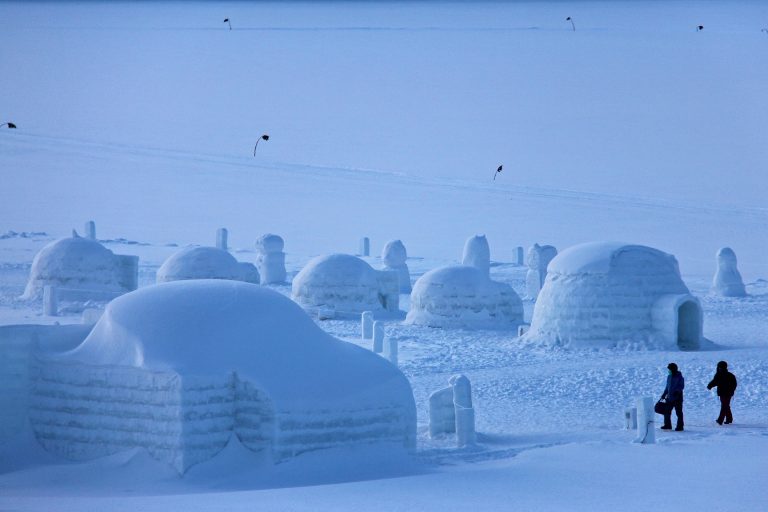
The term Inuit means “humanity” and indicates an Arctic people descending from the Thule civilization. The Inuits belong to the group of Eskimo peoples along with the Yupikis. The former live in North Alaska, Greenland and Canada, while the latter live in Western Alaska and the Russian Far East.
The Inuits of Greenland inhabit a territory with extreme climatic conditions, mostly composed by the tundra and the permafrost. They represent 90% of the population of Greenland, while the remaining 10% is made up of Europeans, mainly Danes. This is due to the fact that Greenland is part of the Kingdom of Denmark.
If you are planning a trip there, you may end up meeting with this incredible population. Here are some cultural curiosities to know about the Inuits before you leave.
Culture: Solidarity and No Private Property
For the Inuits, the concept of private property does not exist and there are no heads of state or government structures. The Inuit society is based on solidarity between villages and on the collective possession of goods. Children are constantly the object of attention. However, they are left to grow free, without any punishment, reprimand or punishment. Moreover, the Inuits live mainly on hunting and fishing. Fishing takes place in rivers, while hunting focuses on caribou or seals, whales and walruses.
Over the centuries, the Inuits have learned to adapt to the cold by skilfully exploiting the materials available and the residues of the hunt. In fact, they can make heavy leather clothing, sledge skates with frozen meat and horn or ivory harpoons. Since only mosses grow in their land, they have no idea what a tree is. They are perhaps the only people in the world who have never fought a war.
Language: Inuits Have Many Terms to Define Snow
The Inuit language is an idiom spoken over a vast territory, from Greenland to Alaska. As a result, it varies from region to region. What all the linguistic subgroups have in common, however, is the lexical richness to indicate the snow. In fact, imagine living in a territory where everything depends on snow. It is used to build igloos when it piles up on the ground, it can be drunk when it melts, can prevent travel when it is abundant. Depending on the snow, people choose the routes to be followed by sledge, where to build their houses, where and how to carry out a hunt. Snow can even become a danger.
So it’s no wonder that the Inuits have so many terms to define each of its forms. They distinguish, for example, the snow that falls from the one that has just fallen, the soft one from the one that makes it difficult to walk, the one on which it rained from the one that precedes the arrival of winter.









